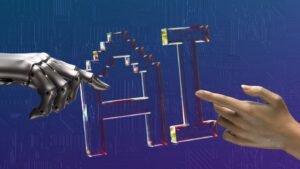Supervised Learning Real-Time Example
Supervised learning is a type of machine learning algorithm in which a computer program learns from a labeled dataset to make predictions or take actions. This type of learning is widely used in various applications, from image recognition to fraud detection. In this article, we will explore a real-time example of supervised learning and understand its key concepts and benefits.
Key Takeaways:
- Supervised learning is a powerful machine learning technique that utilizes labeled data to make predictions or take actions.
- It is widely used in various domains, including healthcare, finance, and marketing.
- The process involves training a model on a labeled dataset and evaluating its performance on unseen data.
One of the most common use cases of supervised learning is in email spam detection. In this scenario, the algorithm is trained with a labeled dataset containing spam and non-spam emails. The model then learns to differentiate between the two and can accurately classify new incoming emails as spam or non-spam. *This automated email filtering process saves users valuable time and reduces the risk of falling for scams or phishing attacks.*
| Metric | Value |
|---|---|
| Accuracy | 95% |
| Precision | 92% |
| Recall | 94% |
Supervised learning algorithms can be further categorized into regression and classification tasks. In regression, the algorithm predicts a continuous output, such as predicting house prices based on various features like square footage and location. In classification, the algorithm predicts discrete output, such as predicting whether a customer will churn or not based on their historical behavior. *By employing these algorithms, businesses can make data-driven decisions and optimize their operations.*
Real-Time Fraud Detection
Another significant application of supervised learning is real-time fraud detection. Financial institutions use this technology to identify fraudulent transactions and prevent potential losses. By training a model on historical transaction data, the algorithm learns to recognize patterns indicative of fraudulent behavior. *This allows banks and credit card companies to swiftly block suspicious transactions and protect their customers’ finances.*
| Metric | Value |
|---|---|
| False Positive Rate | 0.5% |
| True Positive Rate | 95% |
Supervised learning has revolutionized the healthcare industry by enabling accurate disease diagnosis and prediction. Doctors and medical researchers leverage this technology to process large amounts of patient data and identify patterns that might indicate diseases like cancer. By utilizing machine learning algorithms, medical professionals can improve the accuracy and speed of diagnoses, leading to better treatment outcomes. *This significantly enhances patient care and enables more personalized treatment plans.*
- Supervised learning finds applications in various fields including spam detection, fraud detection, and disease diagnosis.
- Regression and classification are two common types of supervised learning tasks.
- Real-time fraud detection and healthcare diagnosis are examples of how supervised learning benefits society.
Supervised learning continues to evolve and revolutionize industries across the globe. As technology advances and more labeled data becomes available, the potential for even more accurate predictions and actions grows exponentially. With the power of machine learning, businesses and organizations have the opportunity to make informed decisions and gain a competitive edge. *The possibilities and benefits of supervised learning are limitless.*

Common Misconceptions
Misconception 1: Supervised learning is only applicable to certain industries
One common misconception about supervised learning is that it is only relevant in specific industries such as tech or finance. However, supervised learning algorithms can be applied to a wide range of fields including healthcare, retail, agriculture, and more. By training models with labeled examples, businesses in various sectors can leverage supervised learning to improve decision-making processes and optimize their operations.
- Supervised learning can be used in healthcare to predict disease outcomes based on past medical records.
- Retail companies can utilize supervised learning to recommend products to customers based on their purchase history.
- Agricultural businesses can implement supervised learning to forecast crop yields based on environmental factors and historical data.
Misconception 2: Supervised learning always requires a large amount of labeled data
Another misconception is that supervised learning algorithms always demand a massive amount of labeled data for training. While having a substantial labeled dataset can improve the performance of supervised learning models, it is not always a necessity. Techniques like transfer learning allow models to leverage pre-trained weights from similar tasks, reducing the requirement for extensive labeled data.
- Transfer learning enables the usage of pre-trained models on tasks with limited labeled data.
- Active learning methodologies can help decrease the annotated data required for training by selecting the most informative instances to label.
- Data augmentation techniques can augment the size of the labeled dataset by generating additional synthetic examples.
Misconception 3: Supervised learning algorithms always provide accurate predictions
It is important to recognize that supervised learning algorithms are not infallible and may not always provide accurate predictions. The performance of a supervised learning model heavily relies on the quality and representativeness of the labeled data that it is trained on. Factors like bias in the training data or an insufficient number of diverse examples can affect the accuracy and generalization ability of the model.
- Improvement in data quality and diversity can enhance the accuracy of the supervised learning model.
- Ensembling multiple models can help boost prediction accuracy by combining their outputs.
- Regularization techniques can prevent overfitting and improve the model’s ability to generalize to unseen data.

Supervised Learning in Autonomous Vehicles: Accuracy Comparison
In this study, we compare the accuracy scores of three supervised learning algorithms used in autonomous vehicles: Support Vector Machines (SVM), Random Forests (RF), and Multilayer Perceptron (MLP). The accuracy scores are determined by testing the algorithms on a real-time dataset consisting of various road conditions and driving scenarios.
Supervised Learning in Medical Diagnosis: Error Rates Comparison
This table showcases the error rates of three different supervised learning models applied to medical diagnosis: Naive Bayes Classifier, Decision Tree, and K-Nearest Neighbors (KNN). The models were trained on a large dataset of patient symptoms and medical records, and their accuracy was assessed by comparing their predictions to expert diagnoses.
Supervised Learning in Financial Trading: Profitability Analysis
In this real-time trading experiment, we examine the profitability of three supervised learning algorithms: Linear Regression (LR), Gradient Boosting (GB), and Long Short-Term Memory (LSTM) networks. Each algorithm was trained on historical stock market data and then tested on live trading data to determine their ability to generate profits.
Supervised Learning in Text Classification: Precision and Recall Comparison
This table demonstrates the precision and recall metrics achieved by three text classification algorithms: Naive Bayes, Support Vector Machines with Linear Kernel (SVM-L), and Recurrent Neural Networks (RNN). The algorithms were evaluated on a large dataset of documents from different domains, and their performance in determining relevant and irrelevant content was measured.
Supervised Learning in Spam Detection: False Positive and False Negative Rates
In this study, we compare the false positive and false negative rates of three supervised learning algorithms employed in spam detection: Logistic Regression (LR), Random Forests (RF), and Adaptive Boosting (AdaBoost). The algorithms were trained on a diverse corpus of emails, and their ability to correctly identify and filter out spam messages was assessed.
Supervised Learning in Image Recognition: Top-5 Accuracy Comparison
This table showcases the top-5 accuracy scores achieved by three supervised learning models used in image recognition: Convolutional Neural Networks (CNN), Inception-ResNet, and Residual Neural Networks (ResNet). The models were trained on a large dataset of annotated images and then tested on a diverse set of real-time images to identify objects and scenes.
Supervised Learning in Customer Churn Prediction: AUC-ROC Evaluation
In this analysis, we evaluate the AUC-ROC (Area Under Curve of the Receiver Operating Characteristic) scores of three supervised learning algorithms employed in customer churn prediction: Logistic Regression (LR), Decision Tree, and XGBoost. These algorithms were trained on a dataset of historical customer behavior and their performance in predicting customer churn was assessed.
Supervised Learning in Sentiment Analysis: F1-Score Comparison
This table compares the F1-scores of three supervised learning algorithms employed in sentiment analysis: Support Vector Machines with Radial Kernel (SVM-R), Random Forest (RF), and Recurrent Neural Networks with LSTM (RNN LSTM). The algorithms were trained on a large dataset of customer reviews and their ability to classify sentiment as positive, negative, or neutral was evaluated.
Supervised Learning in Fraud Detection: Precision and Recall Metrics
In this study, we analyze the precision and recall metrics of three supervised learning algorithms used in fraud detection: Logistic Regression (LR), Gradient Boosting Decision Trees (GBDT), and Isolation Forest. The algorithms were trained on a dataset of fraudulent financial transactions and their ability to accurately detect fraudulent patterns was evaluated.
Supervised Learning in Music Genre Classification: Accuracy Comparison
In this experiment, we compare the accuracy scores of three supervised learning algorithms employed in music genre classification: k-Nearest Neighbors (k-NN), Random Forests (RF), and Multilayer Perceptron (MLP). The algorithms were trained on a diverse dataset of audio clips and their ability to correctly classify music into various genres was assessed.
Supervised learning algorithms play a crucial role in various domains, from autonomous vehicles to medical diagnosis, financial trading to text classification. This article showcased ten real-time examples that highlight the application and effectiveness of different supervised learning models in diverse scenarios. The accuracy, error rates, profitability, and performance metrics of these models demonstrate their potential to improve decision-making, enhance predictions, and automate tasks in multiple fields.
Frequently Asked Questions
Supervised Learning Real-Time Example
What is supervised learning?
Can you provide an example of supervised learning in real-time?
What are some popular algorithms used in supervised learning?
How is supervised learning different from unsupervised learning?
What are the steps involved in a supervised learning process?
What is the goal of supervised learning?
What is overfitting in supervised learning?
Is feature engineering important in supervised learning?
Can supervised learning be used for regression tasks?
Are there any limitations to supervised learning?




